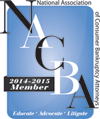Although most attention is paid to what someone filing bankruptcy needs to do before filing, there are some things debtors must do after a bankruptcy is filed. Documents have to be produced, counseling has to be taken and a required “meeting of creditors” occurs about one month after filing.
After a bankruptcy is filed, debtors (through their attorney) must provide the trustee administering their case certain documents. These include the most recent tax returns, statements showing the balances in any bank accounts on the date of filing and any paystubs with the bankruptcy filing date within the pay period. The tax returns show the trustee the amount of tax refunds received or to be received in the future and how much might not be exempt under Iowa’s personal property exemptions. The bank statements are used by the trustee to determine whether money in the accounts on the date of filing exceed possible exemptions. The trustee may also want the bank statements to show debits and credits for the prior few weeks to identify any transactions like money paid to relatives or unsecured creditors. The paystubs will show accrued wages due to debtors on the date of filing. Because personal property exemptions in Iowa are relatively generous, debtors rarely have non-exempt wages, tax refunds or bank balances and if they do it’s often a result of inexperienced attorneys not properly planning when a bankruptcy should be filed or what type of bankruptcy should be filed.
After a bankruptcy is filed debtors also need to take a second credit counseling course. This second course is only slightly more useful than the credit counseling done prior to filing. The credit counseling requirements have added to the cost of filing bankruptcy, shifted resources from struggling debtors to companies and done next to nothing to help people avoid the need to file bankruptcy. The counseling requirements were always a misguided provision demanded by patronizing politicians who live on taxpayer money. Thankfully, the courses can be done online in less than 2-3 hours and cost typically less than $50.
The primary post-bankruptcy requirement is for debtors to participate in a meeting conducted by the Chapter 7 or 13 trustee. This meeting typically occurs about one month following the bankruptcy filing. Since the pandemic started in 2020, these meetings have been conducted by telephone conference call rather than in-person and there’s a good chance this change will be made permanent (there’s some discussion about using video conference). Conducting the hearings by phone has saved all participants — debtors, trustees and attorneys, valuable time and resources. These meetings, often called a “341” meeting or hearing because it’s provided by 11 U.S.C. 341, involves the trustee asking the debtor questions about the “schedules” filed in their bankruptcy that disclosed their property, debts and past payments to creditors. The trustee can inquire about property that may not be exempt or payments made to relatives or creditors that create a “preference payment” that the trustee might be able to recover. Although technically called a “meeting of creditors,” this meeting rarely involves creditors participating. Most bankruptcy cases result in no creditors receiving any money so it’s not usually productive for creditors to participate and ask questions of the debtors. In a Chapter 13 trustee meeting, debtors will also answer questions about the “plan” filed that proposes how a portion of the debt will be repaid.
None of these post-bankruptcy requirements are difficult or something to be concerned about if debtors have been truthful on the court documents filed and if they have an experienced bankruptcy attorney who can advise them on when to file and what type of bankruptcy is best for them.



